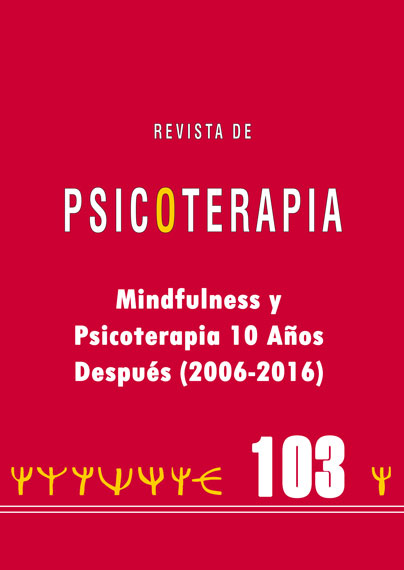Intervenciones Basadas en Mindfulness para El Dolor Crónico
DOI:
https://doi.org/10.33898/rdp.v27i103.102Palabras clave:
mindfulness, dolor crónico, aceptación, escáner corporal, yoga, intervenciones psicoterapéuticas en dolor crónicoResumen
El dolor crónico representa un importante problema de salud pública, tanto por su elevada prevalencia como por su coste emocional, económico y social. Durante el procesamiento del dolor crónico intervienen múltiples áreas cerebrales, produciendo cambios tanto estructurales como funcionales, que pueden dar como resultado en ocasiones una mala adaptación al mismo. El dolor activa el sistema de alerta, aumenta el miedo, la ansiedad, el estrés y la atención dirigida al mismo. La conciencia somática es un recurso imprescindible en las intervenciones para dolor crónico. Mindfulness mejora la regulación emocional, disminuye la evitación experiencial y el miedo, modula la percepción del estimulo doloroso y favorece los cambios estructurales y funcionales hacia una mejor adaptación al dolor. Las intervenciones basadas en mindfulness han mostrado su eficacia en el manejo del dolor crónico a través de numerosos estudios de investigación.Descargas
Descargas
Publicado
2016-03-01
Cómo citar
Palao Tarrero, Ángela, & Rodríguez Vega, B. (2016). Intervenciones Basadas en Mindfulness para El Dolor Crónico. Revista de Psicoterapia, 27(103), 21–35. https://doi.org/10.33898/rdp.v27i103.102
Número
Sección
Artículo de monográfico
Licencia
Los autores/as que publiquen en esta revista aceptan las siguientes condiciones:
- Los autores/as conservan los derechos de autor y ceden a la revista el derecho de la primera publicación, con el trabajo registrado con la Creative Commons CC-BY-NC 4.0 Internacional, que permite a terceros citar el texto y usarlo sin alterarlo y sin beneficio económico, siempre que mencionen la autoría del trabajo y la primera publicación en esta revista.
- Los autores/as pueden realizar otros acuerdos contractuales independientes y adicionales para la distribución no exclusiva de la versión del artículo publicado en esta revista (p. ej., incluirlo en un repositorio institucional o publicarlo en un libro), siempre que indiquen claramente que el trabajo se publicó por primera vez en esta revista.
- Las opiniones expresadas en los trabajos son responsabilidad única de los/as autores/as, no reflejando en ningún caso las opiniones o políticas científicas de la revista.








